Recent Articles
Popular Makes
Body Types
10 Nissan Armada Competitors to Consider
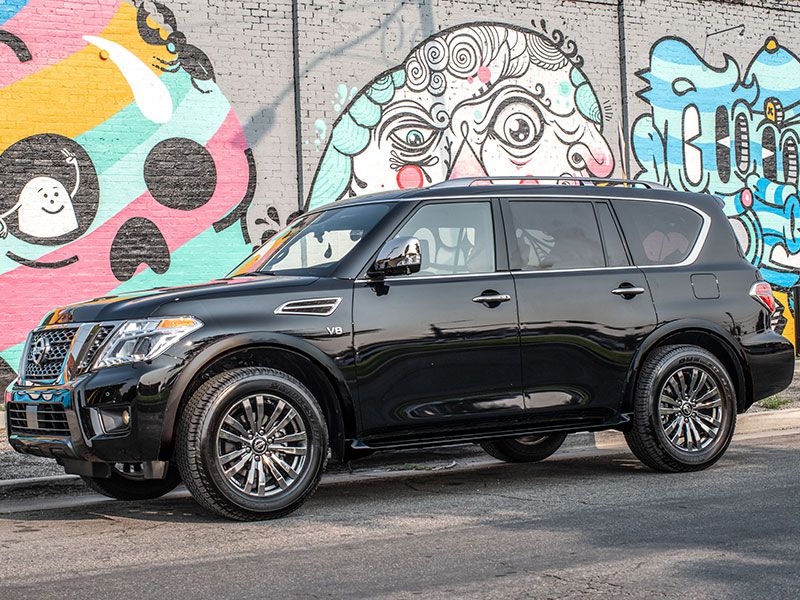
2019 Nissan Armada ・ Photo by Nissan
Sailing into the third year of its second generation of production, the 2019 Nissan Armada is coming off two years of strong sales. The Armada, which began its journey as the Pathfinder Armada in 2003, is a body-on-frame full-size SUV that seats seven or eight, depending on second-row configuration.
The Armada uses a 5.6-liter V8 gasoline engine that is naturally aspirated (non-turbo), tuned to produce 390 hp and 294 lb-ft of torque. A standard seven-speed automatic transmission with rear-wheel drive, or optional all-wheel drive and four-wheel independent double-wishbone suspension, delivers a smooth ride both on- and off-road. Prices start at $47,100 for the 4x2 SV trim and go up to $65,690 for 4x4 Platinum Reserve. Presented in alphabetical order by brand, here are 10 Nissan Armada Competitors to Consider.
2019 Chevrolet Suburban
The most veteran of SUV nameplates, the Chevy Suburban has been in continuous production since 1935 through 11 generations. Like the Armada, the Suburban is a body-on-frame SUV with three rows of seating. The 2019 Chevrolet Suburban comes with a 5.3-liter EcoTec3 V8 gasoline unit that is naturally aspirated (non-turbo), with output rated at 355 hp and 383 lb-ft of torque. A 6.2-liter V8 is available on the top trim (420 hp/460 lb-ft of torque).
A six-speed automatic is standard, with a 10-speed automatic available with the 6.2-liter engine. Rear-wheel drive is the default, and you can choose all-wheel drive with either engine. Suburban’s cargo capacity behind the third row is 39.30 cubic feet, more than double the Armada’s 16.5 cubic-foot capacity.
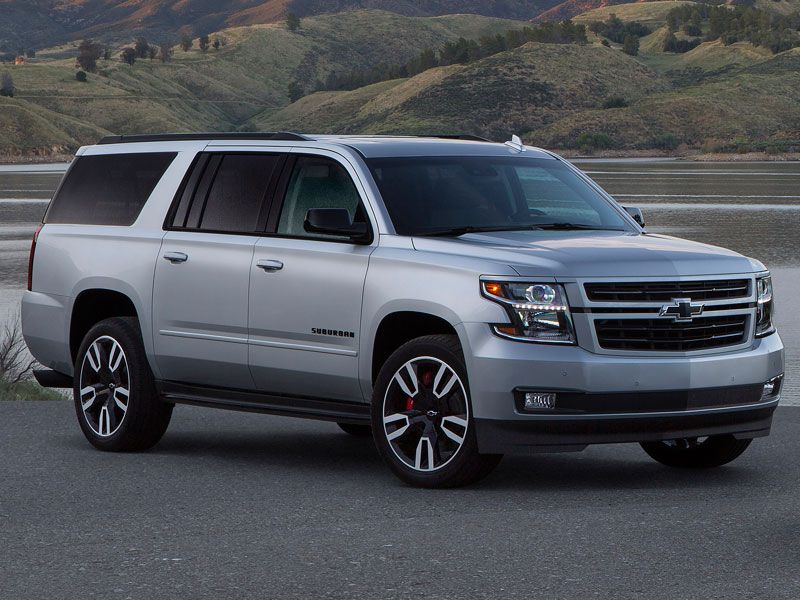
Photo by Chevrolet
2019 Ford Expedition
Ford’s Expedition, also a body-on-frame full-size SUV, has had a similar resurgence to Armada, and is a good competitor to consider. The 2019 Ford Expedition is a fourth-generation model, in its second year of production since a 2018 redesign. Ford made the bold choice to equip the big three-row SUV with a turbocharged 3.5-liter EcoBoost V6 engine instead of the traditional V8. The EcoBoost puts out 375 hp and 470 lb-ft of torque, and uses a 10-speed automatic transmission to get power to the rear wheels (standard) or all four wheels (available).
Expedition is available with a 122.5-inch wheelbase, or as Expedition Max with a 131.6-inch wheelbase. Prices start at $52,130 for a standard wheelbase Expedition XLT with rear-wheel drive, and go up to $73,365 for Expedition Platinum. Add $2,695 for Max models.
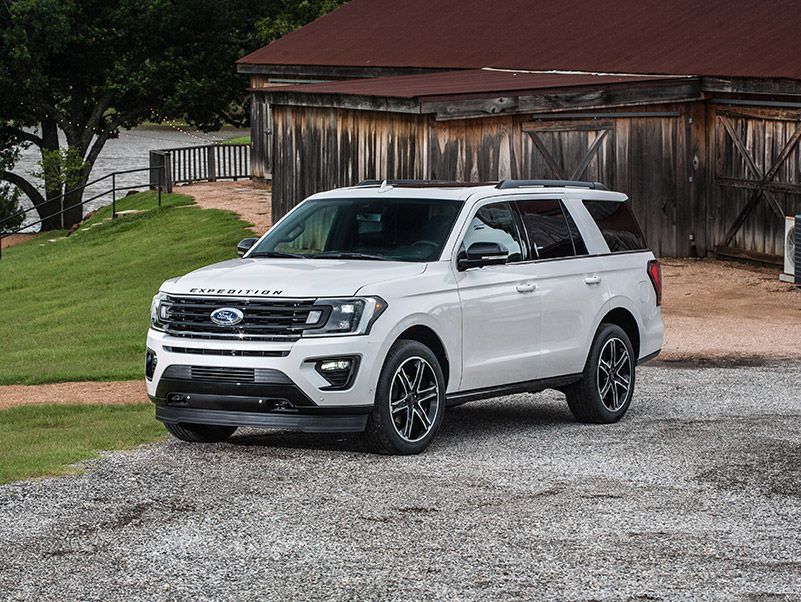
Photo by Ford
2019 Honda Pilot
Honda’s three-row SUV, the Pilot, is a unibody (frameless) crossover vehicle, but smart packaging and robust construction make it a worthy competitor for the Armada. Pilot has been around since the 2003 model year, and entered its third generation in 2016. There’s just one engine available for Pilot, a 280-hp, naturally aspirated (non-turbo) 3.5-liter V6 that uses direct gasoline injection and four valves per cylinder.
A six-speed automatic comes in entry trim levels (LX, EX, and EX-L), while Touring and Elite models get a nine-speed automatic with shift-by-wire technology and paddle shifters. Four-wheel independent suspension (MacPherson strut front/multi-link rear) delivers good handling and a flat load floor in the cargo compartment. Like Armada, Pilot can be outfitted to handle seven or eight passengers. Pricing begins at $31,450 for the base LX FWD (add $1,900 for AWD), and goes up to $48,020 for Elite AWD.
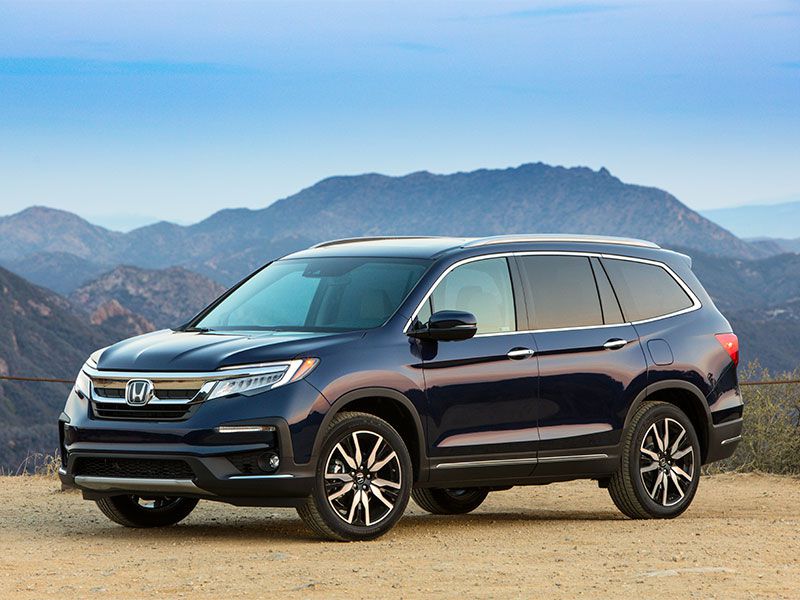
Photo by Honda
2019 GMC Yukon
Sharing a platform with GM’s other full-size SUVs, the 2019 GMC Yukon is a formidable competitor to consider against Armada. Yukon has been in the GMC lineup since 1991, and is currently in its fourth generation (since 2015). Yukon has two not-so-secret weapons: A long-wheelbase variant, Yukon XL, and the near-luxury Denali trim line.
Yukon SLE and SLT models come with the 5.3-liter EcoTec3 V8 engine. SLT can upgrade to the 6.2-liter EcoTec3 V8, while Denali trim level models come with the 6.2-liter V8 standard. The XL variants have a 130-inch wheelbase, 14 inches longer than the standard Yukon. This results in a substantial gain in cargo space behind the third row of seats – 39.30 cubic feet vs. 15.30 cubic feet – and third-row legroom (34.50 inches vs. 24.80 inches). Pricing starts at $49,600 for Yukon RWD, $52,400 for Yukon XL, and goes up to $73,795 for Yukon XL 4WD Denali.
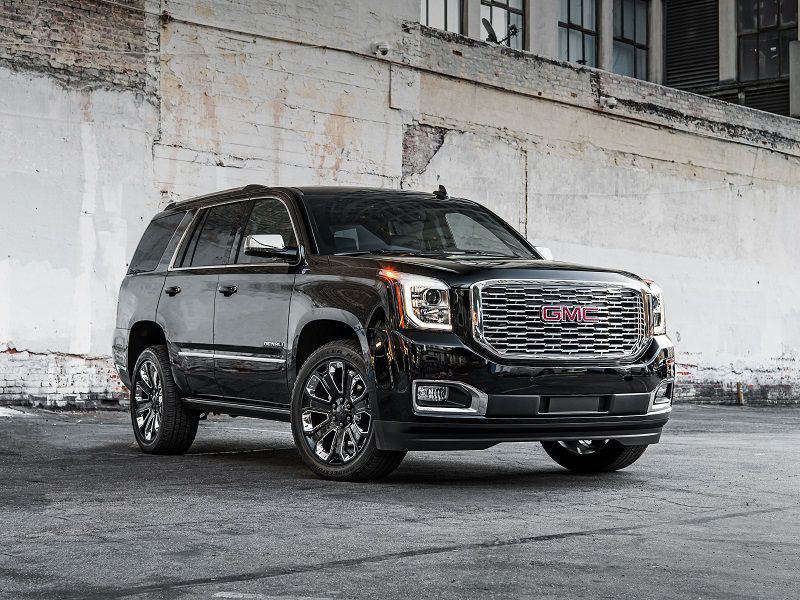
Photo by General Motors
2019 Infiniti QX80
If you like the Armada, but you crave a higher level of luxury, you might want to consider the 2019 Infiniti QX80. It shares a platform with the Armada, along with many mechanical and cosmetic details. But the level of execution on QX80 is much higher, with superior fit and finish, standard luxury features, and available luxury upgrades.
The 5.6-liter V8 engine is tuned to produce 400 hp in the QX80, up from 390 hp in Armada. Bose 13-speaker surround sound is standard in the base model, along with navigation and an 8-inch touchscreen display. Step up to Limited, and you get 15 speakers, dual 8-inch touchscreen displays, and other tech upgrades. Pricing starts at $65,400 for QX80 Luxe, and goes up to $90,100 for QX80 Limited 4WD.
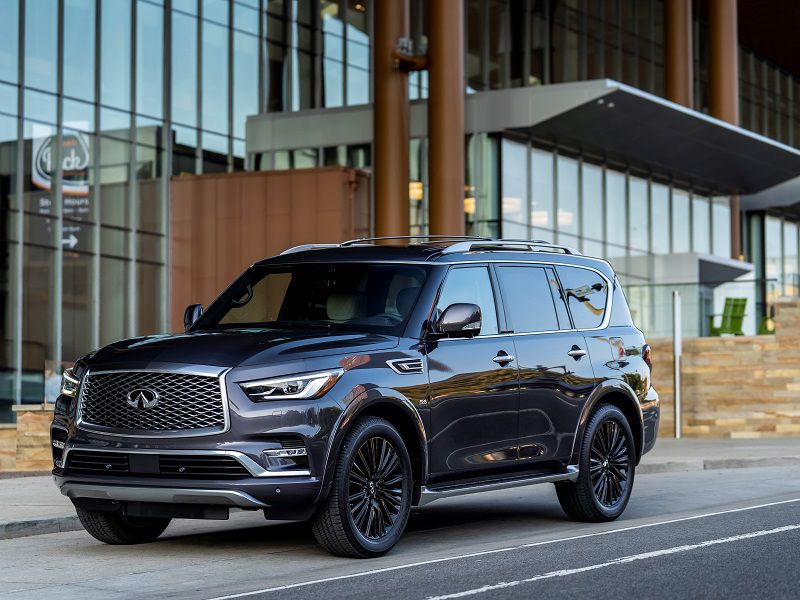
Photo by Infiniti
2019 Lexus LX 570
The 2019 Lexus LX 570 is another full-size body-on-frame SUV to consider versus Armada. Though it’s a bit more expensive than the Nissan, LX 570 is quite similar in terms of raw numbers and specifications. It uses a 5.7-liter naturally aspirated (non-turbo) V8 gasoline engine (383 hp/403 lb-ft of torque), matched with an eight-speed automatic transmission and four-wheel drive.
LX uses a shorter wheelbase than Armada, 112.3 inches vs. 121.1 inches, which results in less luggage space behind the third row (9.1 cubic feet vs. 16.5 cubic feet). Legroom in the LX third row, however, is 0.4 inches longer (28.8 inches) than Armada. There’s a two-row variant of LX this year, too. It’s identical in almost every measurement, but deletes the third row in favor of more open space and adds more standard luxury features. Prices for LX start at $86,080 for two-row, and $91,080 for three-row.

Photo by Lexus
2019 Lincoln Navigator
Sharing a platform with the Ford Expedition, the 2019 Lincoln Navigator is a premium body-on-frame full-size SUV to consider against Armada. Like Expedition, the Navigator has foresworn the V8 for a twin-turbocharged V6. Lincoln’s version displaces 3.5 liters, and is tuned to produce 450 hp and 510 lb-ft of torque when fueled with 93-octane Premium gasoline. Lincoln has further innovated by programming six selectable Lincoln Drive Modes, from Conserve to Excite, to allow owners to fine-tune performance.
Navigator is loaded with standard luxury features, and excels at convenience. Access to the third row of seating is aided by one-hand operation of the second row, and the third row gets a power reclining feature to enhance comfort. Prices start at $73,205, and go up to $99,595 for Black L long-wheelbase editions.
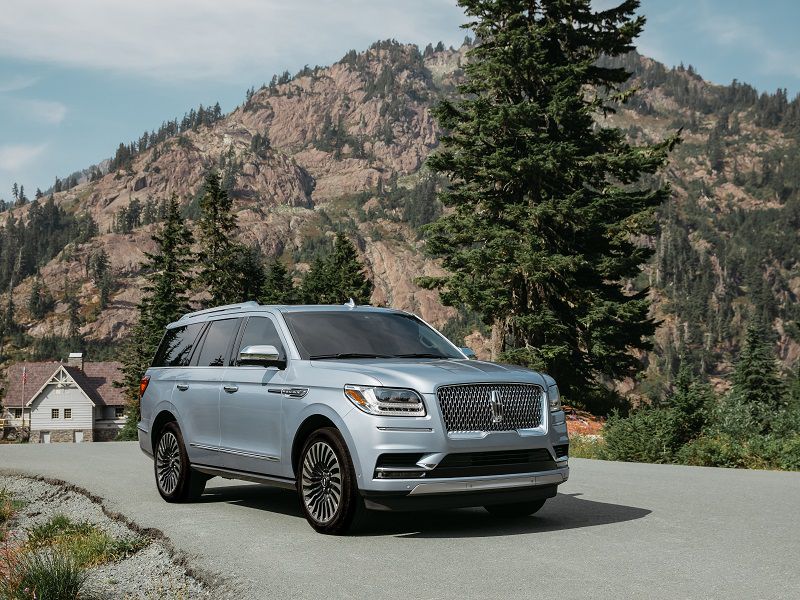
Photo by Lincoln
2019 Mercedes-Benz GLS-Class
Another full-size luxury SUV, the 2019 Mercedes-Benz GLS-Class, belongs on any list of competitors for the Armada, simply because it should be the benchmark for performance and handling in the class. GLS-Class is available in three models, all with four-wheel drive: GLS 450 (starting at $70,150); GLS 550 (starting at $95,750); and AMG GLS 63 (starting at $127,150).
Each model uses a twin-turbocharged engine, from a 3.0-liter V6 in GLS 450 (362 hp/369 lb-ft of torque), to a 4.7-liter V8 in GLS 550 (449 hp/516 lb-ft of torque), to a 5.5-liter AMG V8 in the GLS 63 (577 hp/561 lb-ft of torque). Performance is a particular strength, with locomotive-like momentum and compelling acceleration. The AMG GLS 63 can go from 0 – 60 mph in 4.5 seconds.
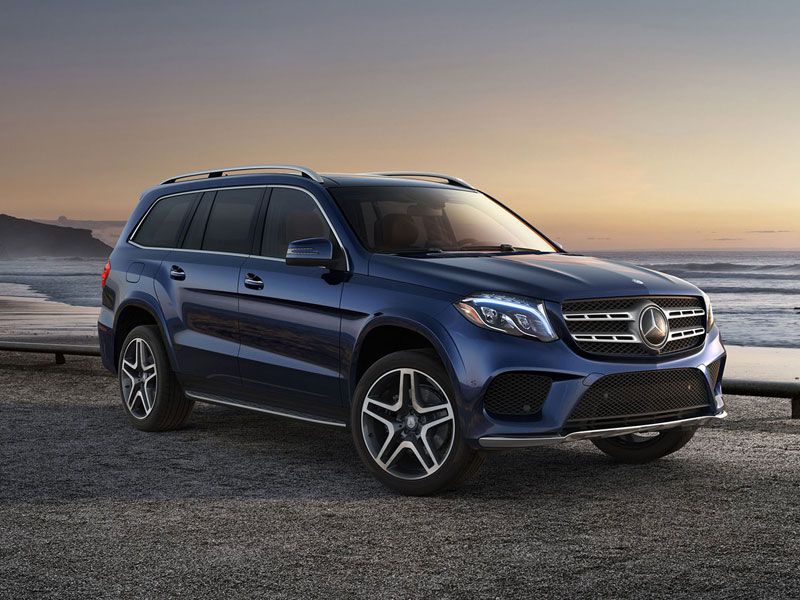
Photo by Mercedes-Benz
2019 Nissan Pathfinder
If you need to transport your growing family, but find Armada a little too big for your needs, you should take a look at the 2019 Nissan Pathfinder. A three-row crossover suv, the Pathfinder trades space for efficiency. The third row lacks expansive legroom, but works for kids. Fuel economy is much better than the Armada: 20 mpg city/27 mpg highway/23 combined with front-wheel drive (knock off one mpg with all-wheel drive), versus a best of 14 mpg city/19 mpg highway/16 mpg combined for rear-wheel-drive Armada models.
Despite the size difference between Pathfinder and Armada, Pathfinder still manages to accommodate up to 16.1 cubic feet of luggage behind its third row, just 0.4 cubic feet less than Armada. Pathfinder prices start at $31,430, and go up to $44,460 for the loaded Pathfinder Platinum 4WD.
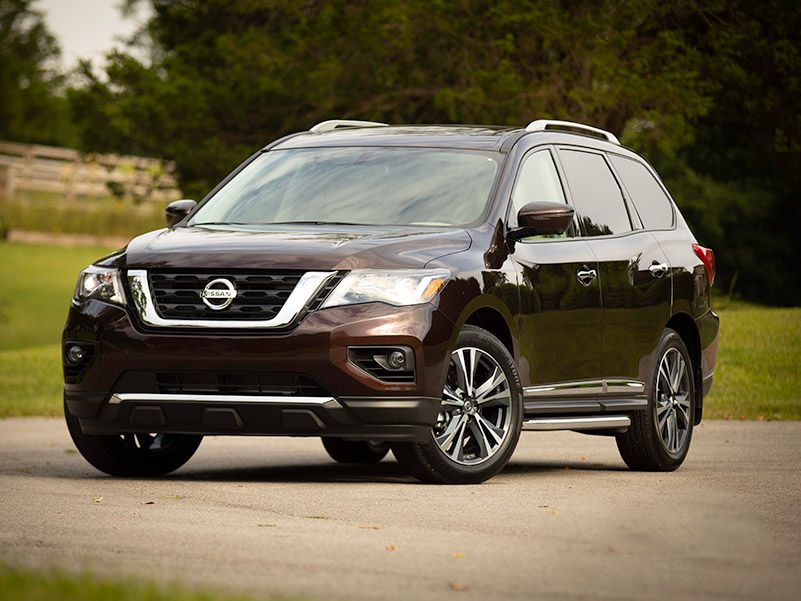
Photo by Nissan
2019 Toyota Sequoia
The 2019 Toyota Sequoia is another direct competitor to Nissan Armada in the full-size body-on-frame SUV category. The Sequoia launched as a 2001 model, and has been produced in its second generation since 2008. Like the Armada, the Sequoia has seen a surge in sales over the past few years, as the public’s taste for full-size SUVs has returned with continued low fuel prices.
The Sequoia uses Toyota’s proven 5.7-liter i-Force V8 engine (381 hp/401 lb-ft of torque), hooked up to a six-speed automatic transmission with rear-wheel drive or available all-wheel drive. Like the Armada, the Sequoia has four-wheel independent suspension with double-wishbone setups at both ends. Upper trim levels come with electronic modulated air suspension, which makes handling even better. Four-wheel-drive versions come with a Torsen limited-slip center differential with locking, which enhances its capability off-road. Prices for Sequoia start at $48,850 for SR5 RWD, and go up to $67,785 for Platinum AWD.
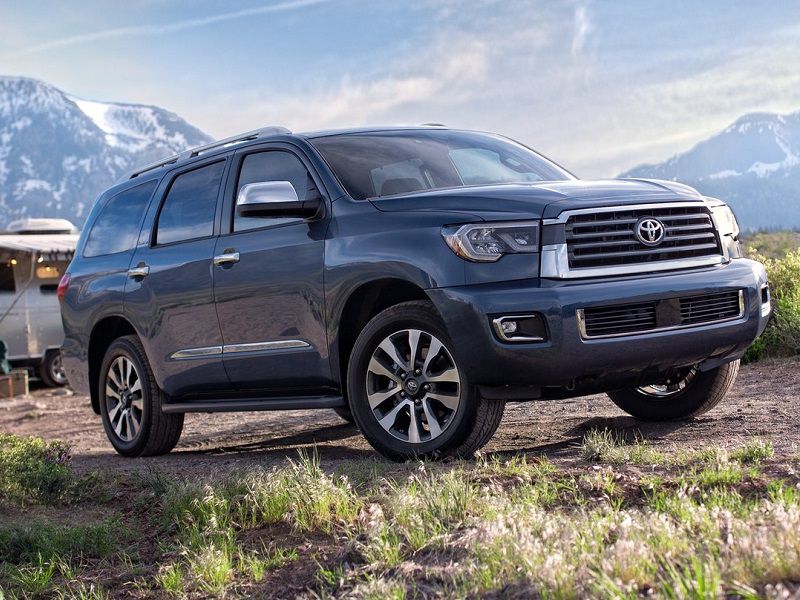
Photo by Toyota